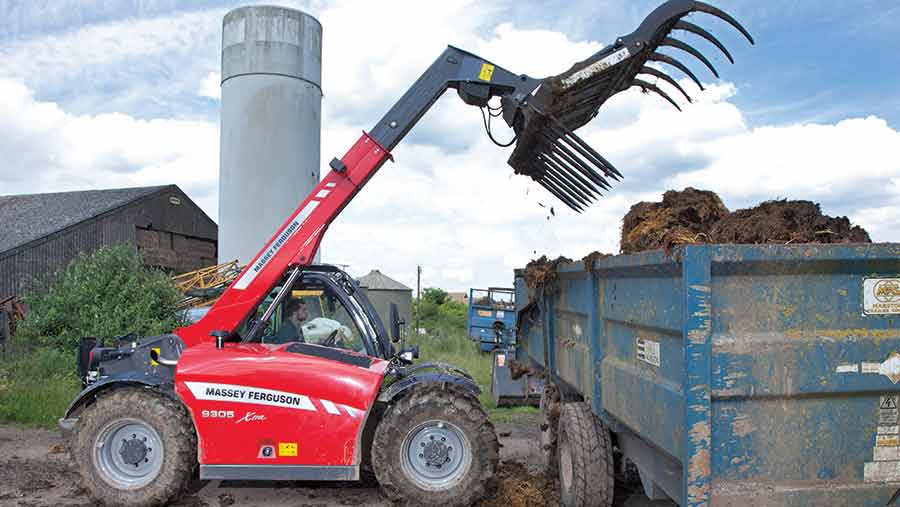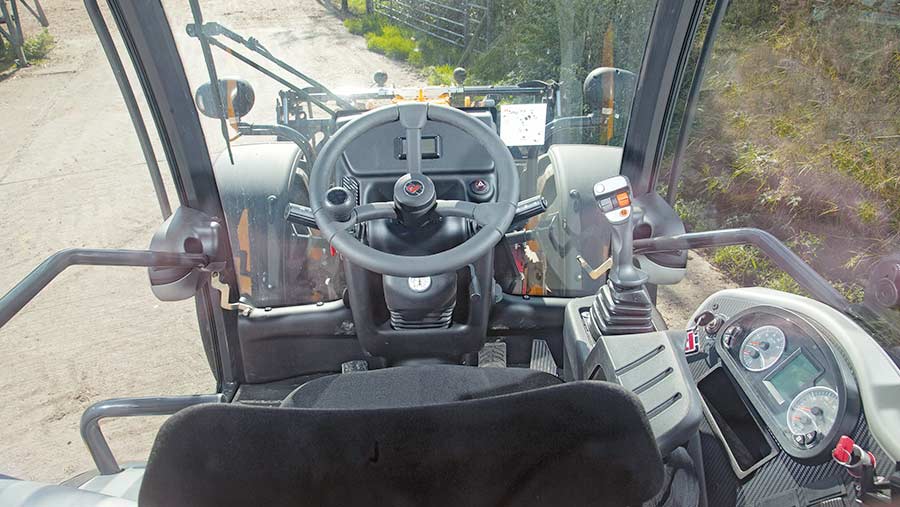Buyer’s guide to telehandlers and loading shovels
Take a look through the latest Farmers Weekly telescopic handlers specification and price guide and it is clear that whatever size and shape of machine you fancy, someone will be making it.
From mini teleloaders lifting a little over 0.5t to less than 2.5m – but capable of squeezing through the narrowest doorways – to the heavy-lifting and high-reaching giants, there is a telescopic handler to suit every need.
Download the Telehandler Specs Guide 2017 (PDF)
Stable sector
New manufacturers are catering for the “stable” sector in particular, with Italian firm MultiOne (through RE Buildings) and Sweden’s Norcar tackling Avant’s position in the mini machine market. Tobroco from the Netherlands offers similar machines, too.
More power
Further up the performance and size scale, the central cab machines from Dieci, NC Engineering and Pichon aim to dislodge JCB’s leading market position.
Although recent updates for the TM180 and TM220, and the now more powerful and recently revamped TM320 and TM320S will help fend them off.
JCB Ecomax
Tier 4 final emissions-compliant versions of the JCB Ecomax engine installed in these two models have no need for a particulate filter and get a programmable reversing fan to keep dust and debris at bay.
More extensive and brighter lighting helps on dark mornings and evening shifts, while new instruments include daily service checks at start-up.
A toolbox built into the cab provides secure storage.
Lower-spec option
Weidemann has slotted a lower-powered version of the 4080 articulated handler into its range for operators who don’t need the performance of the 102hp Deutz or 117hp Perkins engined machines.
With 75hp from a Deutz motor, the 4080 LPT has the potential for lower fuel consumption.
This, at the expense of a lift capacity reduced moderately from 3.3t to 3.1t using 73-litre/min or 83-litre/min gear pump hydraulics for the boom and attachments, instead of the 100-litre/min gear or 150-litre/min piston pumps on the standard version.
Side-cab machines
There is a lot of activity among offset cab telehandlers as manufacturers take the opportunity to revamp specs with the changeover to Tier 4 final emissions-compliant engines.
Bobcat has taken its engine supply in-house, replacing Deutz motors with 75hp and 100hp units made by parent company Doosan, which are housed beneath a lower-profile hood to improve right rear three-quarters visibility. SCR and an oxidising catalyst clean up the exhaust gases.
A choice of cab position on the TL26.60 and TL30.60 prioritises forward visibility or overall height.
Meanwhile, the TL35.70 replacement for the TL470 has 500kg more lift capacity at 3.5t, and “HF” models pump oil at up to 190 litres/min for fast responses and to power attachments with motor-driven features.
New control feature
All these updates are also evident on the Massey Ferguson TH range of telehandlers built by Bobcat, including a new control feature that enables the operator to set engine and ground speed separately for distributing grub along feed passages.
Similar flexibility is offered by the JCB Loadall Agri Pro handlers listed in the guide for the first time.
Hydrostatic transmission
These three machines have an all-new transmission that combines a hydrostatic section with three-speed powershift.
That set-up delivers the best of both worlds, reckons JCB – smooth and easily controlled hydro drive for low-speed manoeuvres and direct-drive power efficiency with auto shifting for field runs and road travel.
Allied to time- and fuel-saving hydraulic features, running costs and overall productivity are reckoned to get a boost, too.
Caterpillar
Caterpillar is in the process of shifting to a new line of handlers, beginning with the smallest first.
The TH306D is a 2.8t-lift machine with 5.6m lift-height using SCR and an oxidation catalyst on its 101hp or 114hp Deutz engine to meet emissions rules. It also has a new hydrostatic transmission.
A larger cab features a fresh terminal display that shows the machine’s operational and usage, load chart and stability information.
Auxiliary hydraulics are said to provide the oil flow needed for straw spreaders, feeding buckets and similar attachments.
Download the Telehandler Specs Guide 2017 (PDF)
Guide updated March 2017



